The world watched on Jan. 6 as a mob violently breached the United States Capitol – an unprecedented event resulting in death and destruction.
How did this happen? Claims of a stolen election and calls to “fight” inspired people to take action while Congress was working to ratify election results.
The events that transpired that day show the power language has in framing truth when this language comes from people in authority. What someone in power says can become truth for those who support them. This happens on both sides of the political spectrum, but Jan. 6 is a recent and compelling example.
The answer moving forward lies in seeking societal truth to achieve public good and virtue.
Power of language
Claims of a rigged election began on election night. “This is a fraud on the American public,” President Donald Trump said. “We were getting ready to win this election. Frankly, we did win this election.”
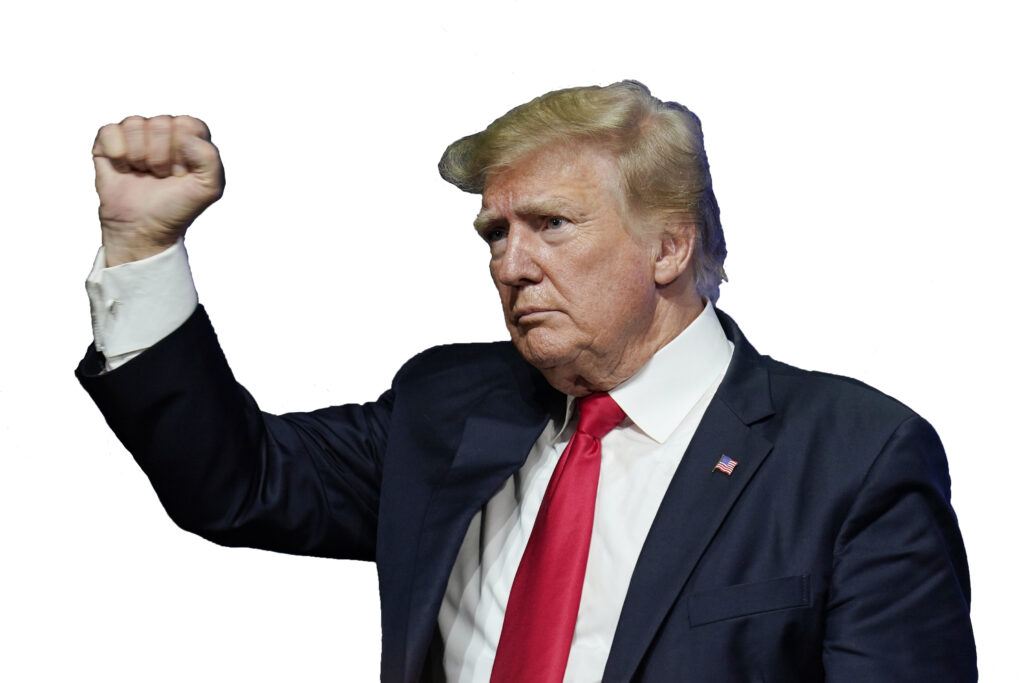
They continued after that point, with Tweets calling out alleged fraud.
“In Detroit, there are FAR MORE VOTES THAN PEOPLE. Nothing can be done to cure that giant scam. I win Michigan!” Trump tweeted on Nov. 18, 2020. But turnout in the city was just under 50%, the BBC reported.
Before the riot in January, Trump spoke to his supporters.
“We’re going to walk down to the Capitol, and we’re going to cheer on our brave senators, and congressmen and women,” Trump said. “We’re probably not going to be cheering so much for some of them because you’ll never take back our country with weakness. You have to show strength, and you have to be strong.”
Former New York City mayor Rudy Giuliani also spoke and called for “trial by combat.” The New York Times collected footage taken during that day and compiled it into a video that showed a timeline of events.
Shots of “Stop the steal!” and “Whose House is it? Our House!” are heard as the crowd breaches the Capitol from multiple entry points.
In the PBS documentary “Trump’s American Carnage,” Trump’s rise to power and actions during his presidency are detailed, with the title based on the statement he made during his 2017 inauguration speech, “This American carnage stops right here and stops right now.”
One focus of the documentary was Trump using Twitter to attack other people — even within his own party. His supporters showed distrust in mainstream media, as Trump dubbed it “fake news.” The power of Trump to alienate people through his words disrupted truth seeking. Some Republican leadership adjusted their actions to support him and avoid being called out.
His presidency closed with the Capitol riot and its aftermath, fueled by claims of a stolen election.
Former Sen. Bob Corker, R-Tennessee spoke in the documentary. “The president perpetrates this total untruth about the election, and intelligent, hard working Americans follow him lock, stock and barrel and it demonstrated, to me, the tremendous fragility of our democracy,” he said.
Senate Minority Leader Mitch McConnell, R-Kentucky, transitioned from largely supporting the president to backing the election results. “If this election were overturned by mere allegations from the losing side, our democracy would enter a death spiral,” he said while counting votes.
In the wake of Jan. 6, the question becomes, “How does the country move forward?” Citizens have seen how the distortion of truth led to radicalization and destruction.
To fully understand what is occurring, one must be able to evaluate where news comes from, analyze why it was written, whether the writers were trying to simply inform or persuade, and come to an informed conclusion about what is being presented. In other words, every person in society needs to become more news literate.
What is news literacy?
The definition of news literacy varies in specifications and scope and is still a relatively new concept within the wider discussion of media or information literacy.
A research publication from the Berkman Center for Internet & Society at Harvard University said news literacy lies at the intersection of media and information literacy.
Media literacy takes a qualitative and interpretive perspective, whereas information literacy has a more quantitative and mechanistic view. News is a type of information mainly delivered through the media, but its connection to civic engagement is what conceptually distinguishes it from other information or media.
The main point of news literacy then, according to the Berkman paper, is “to achieve empowered citizens.”
The SAGE Journal article “Defining and conceptualizing news literacy” explores the nuances of defining news literacy and concludes with this definition:
“We define news literacy as knowledge of the personal and social processes by which news is produced, distributed and consumed, and skills that allow users some control over these processes.”
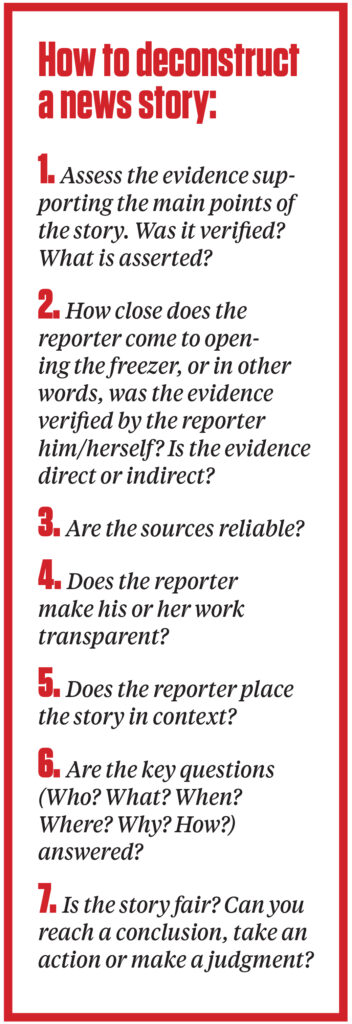
The same paper also proposed five domains to measure news literacy: context, creation, content, circulation and consumption. “These domains are designed to address news environments characterized by increasing reliance on digital and social media for news production, distribution and consumption and to be adaptable to differences or evolutions in news ecosystems,” the paper says.
Stony Brook University in New York has a news literacy program in its School of Journalism. The program is mainly focused on teaching students how to access news, evaluate and analyze news, and appreciate a specific genre of news. The program hopes to empower and educate others on understanding and appreciating the role journalism has in society while also being critical of where the news comes from and what message it is sending.
“A new generation of news literate citizens who demand high quality information will also shape the future of journalism, determining the balance between information that is important versus that which is titillating — a struggle that has been part of journalism from its beginnings,” Stony Brook’s Center for News Literacy website says.
One important factor in news literacy is determining the validity and credibility of a news source. The Stony Brook program presents a “Deconstruction Guide” that could be used to help students or readers analyze a news source.
More resources for news literacy can also be found at The News Literacy Project, a nonpartisan national education nonprofit that “provides programs and resources for educators and the public to teach, learn and share the abilities needed to be smart, active consumers of news and information and equal and engaged participants in a democracy.”
“Happy empire of perfect wisdom and perfect virtue”
Americans have grappled with truth seeking since the country’s beginning. The Federalist Papers were written by Alexander Hamilton, James Madison and John Jay in support of the proposed U.S. Constitution. Hamilton makes a case for seeking truth in the interests of the public good, advocating for a “happy empire of perfect wisdom and perfect virtue” in Federalist No. 6.
To achieve this “happy empire,” Americans need to decide the “important question” in Federalist No. 6 — whether societies of men are capable of establishing good government from reflection and choice, or whether they are “forever destined to depend for their political constitutions on accident and force.”
“Happy will it be if our choice should be directed by a judicious estimate of our true interests, unperplexed and unbiased by considerations not connected with the public good,” he wrote.
In Federalist No. 1 he says there are numerous and powerful causes which serve to give a false bias to judgment, leading to “wise and good men on the wrong as well as on the right side of questions of the first magnitude to society.” He argues that there will always be obstacles that can distract people or cloud their judgement, but acknowledging that is a step toward overcoming these distractions as society seeks truth and the public good.
People may be motivated by upright intentions, but can also be led astray by preconceived jealousies and fears, he wrote.
What do these preconceived jealousies and fears look like today? Confirmation bias on both sides of media — its producers and consumers. People are susceptible to seeking truth based on what they want to be true, and also reporting on what fits their understanding of the world or narrative of current events.
Confirmation bias occurs from the direct influence of desire on beliefs according to a Psychology Today article. When people would like a certain idea or concept to be true, they end up believing it’s true and are motivated by wishful thinking.
“This error leads the individual to stop gathering information when the evidence gathered so far confirms the views or prejudices one would like to be true,” it reads.
Another obstacle to discovering truth and doing what’s best for the public good is the sometimes inadequate information people consume, which can be based on a certain agenda or end goal. There is often a lack of context and nuance.
Welcoming context in the information we create and consume can help separate our quest for truth from what we already subconsciously believe or want to be true. Not acknowledging our preconceived notions as human beings gets in the way of consuming and promoting information that contributes to public good, which is what Hamilton advocated for.
The purpose of journalism
With all this distrust, rise of social media news, surplus of misinformation and increase in polarization occurring, why is journalism even needed? And how do we consume and process the news we are given?
No one seems to care about the media anyway, right? At least not until the activists start spreading infographics on their Instagram stories telling everyone to care, spreading information “since the media won’t” and be mad no one is talking about that day’s tragedy.
But journalism is absolutely necessary for the survival of a democracy. People must know what is going on so they can be engaged civically.
Individuals must be informed so they can vote on who is running their country, and once those people are in office, citizens have the right to be aware of what they are doing because every decision politicians make affect people’s lives.
“A people who mean to be their own governors, must arm themselves with the power which knowledge gives.”
James Madison
The purpose of journalism has always been to inform individuals so those who are self governed can successfully continue being sovereign over their own choices, ideas and government.
The Society of Professional Journalists states in its Code of Ethics, “public enlightenment is the forerunner of justice and the foundation of democracy. Ethical journalism strives to ensure the free exchange of information that is accurate, fair and thorough. An ethical journalist acts with integrity.”
If American citizens are left in the dark or the information they are given is biased and skewed, how are they expected to make any good decisions?
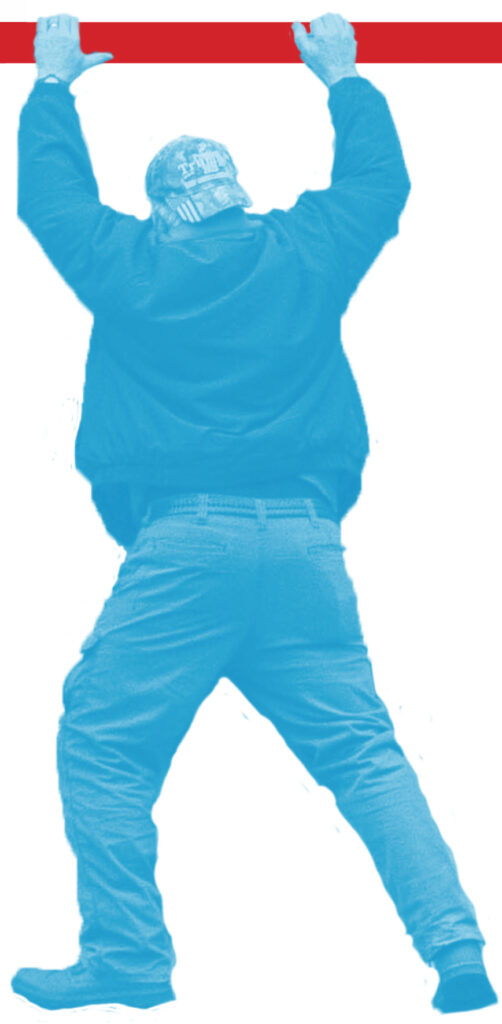
BYU journalism professor Dale Cressman spoke about news literacy with journalism student Emma Benson as part of the Journalism Research and Innovation Project. In his interview, he said “it’s important to give tools so that people can get the information that they need in order to have journalism perform its constitutional function of informing people in our democracy so that they can make decisions.”
Cressman proposed journalists partner more with their communities to regain trust. He said journalists are no longer the sole gatherers of news as citizen journalism is rising with cell phone technology. Journalists should work with citizens and help provide extra information to allow them to be informed enough to make their own decisions.
No amount of facts, figures or quotes from educated people can convince consumers to start trusting news sources or read directly from news outlets (especially when these outlets are media sources they might ideologically disagree with). It is important to at least try to show people the cruciality of understanding, processing and analyzing news and information.
This fight and endeavor is on both sides. Journalists must strive to be better: more transparent, more trustworthy, and aim to report in a fair, balanced, accurate and truthful way. But news consumers have to be involved as well. Even if journalists get better, it makes no difference if there is no one to read it; no benefit to society occurs if no one is informed and engaged.
It’s not just people’s lives that depend on it. The entire democracy of America depends on it.
Why do BYU students need to be news literate?
Frank Christianson, associate dean in the BYU College of Humanities, said universities should “provide news literacy training as the solution to the problem of a fragmented media landscape.”
“For every BYU student, if their time here is going to have any enduring value, they have to understand how knowledge is constructed and developed across a range of disciplines,” he said.
News literacy training in higher education is a prescription to the culture of misinformation that has become a cancer for democracy, Christianson said. Amid the proliferation of sources and the collapse in hierarchies of information, the core problem lies in consumers’ inability to differentiate and evaluate sources.
The humanities college at BYU has information literacy as a core learning outcome of their program and Christianson said students demonstrate their education through information literacy. “That is literally what it means to be educated,” he said. News literacy is the tip of the sphere, Christianson said, and by marshalling information literacy skills, colleges can prepare students to navigate the modern media landscape.
Engaging in news is grounded in democratic citizenship, Christianson said. To be a productive part of a democratic society, individuals must be informed consumers of news.
“If we don’t have enough informed consumers of news, then the whole democratic experiment collapses. I think it’s the single most vital ingredient to a democratic political system.”
College of Humanities Associate Dean Frank Christianson
Cory Leonard, associate director of BYU’s Kennedy Center, believes one of the biggest problems with news consumption today is the trend of news being shared and read only through social media.
“For the average BYU student, it seems pretty obvious to me that if all you’re getting is your newsfeed from your Insta stories, you’re missing a whole lot,” he said.
News literacy is like a mom telling her kids to take their vitamins, Leonard said. It’s “all the things we know we should be doing, but we’re probably not going to, unless we have to.”
Leonard also cited the importance of being informed as members of The Church of Jesus Christ of Latter-day Saints. “To be able to understand the global church and to be able to serve more effectively, it just starts with a basic understanding of what is going on,” he said.
In this sidebar, BYU professors from different departments on campus share their opinions and feelings on news literacy.
A pandemic of distrust
A report from the Reuters Institute for the Study of Journalism at Oxford was released in June and shows U.S. citizen trust in media outlets is at an all time low. The report analyzed 92,000 news consumers from over 46 countries on their trust in media and the U.S. ranked last in media trust.
Only 29% of respondents in the U.S. agreed with the statement “I think you can trust most news, most of the time.”
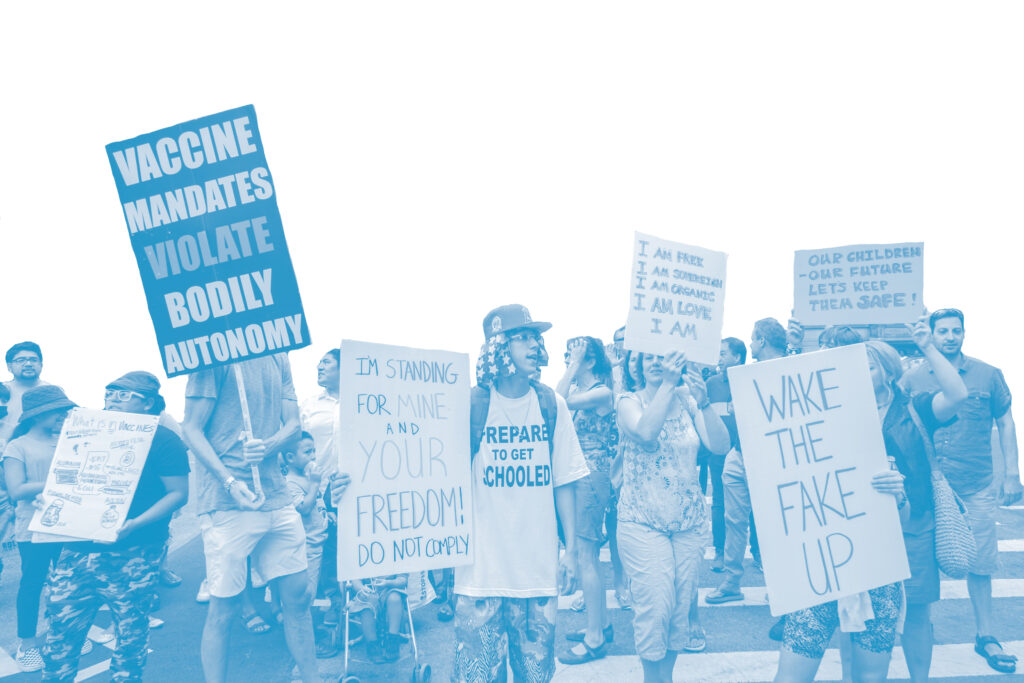
While many of the countries analyzed showed a rise in media trust over the course of the pandemic, the U.S. rating stayed the same.
The data showed local news fared better than national news in trust ratings. At the same time, however, only 21% of those in the U.S. pay for a news subscription, and only 23% of those who do pay, pay for a local news subscription.
Rick Edmonds, author from Poynter Institute reached out to Rasmus Kleis Nielsen, an author of the Reuters study, to ask what strategies U.S. outlets can use to improve the situation. The first strategy was to be more inclusive of minorities in reporting and the second strategy is to include a wider range of partisan views to appeal to both the generally right-leaning older generation and the generally left-leaning younger generation.
The final strategy Nielsen mentioned deals with the disconnect between news media and the public. According to Nielsen, “just one in five Americans identify going directly to a news site or news app as their main way of getting news online.” Nielsen points out trust is often associated with familiarity and the current environment has seen an increase in “fleeting points of contact” with the news outlets and the public that is frequently mediated by social media. Because of this, people in general are no longer associating news as trustworthy.
The study also shows there is a sizable number of citizens who are now avoiding the news altogether which just adds to this problem of distrust and unfamiliarity.
“The work, however good, does not speak for itself if people rarely see it,” Nielsen said. “At least for those parts of the media where people’s opinion of the brands in question would improve if they got to know them better, based their perception more on personal experience and less on stereotypes or cues taken from often highly partisan voices, it seems to me some of the U.S. news media have, basically, a communications and marketing problem.”
Edmonds said local journalists need to continue to build trust with their communities so improvements can be made, even if it is only one step at a time.
“Well-reported, important stories, finely tuned to local interest, are indispensable if the industry is to reach its goal of many more consumers paying for digital news subscriptions,” Edmonds said.
Political polarization’s impact
This study, like many others, Edmonds said, also found extremely high levels of distrust along political lines. The Reuters report showed 75% of those who identify as being on the right thought coverage of their views is unfair.
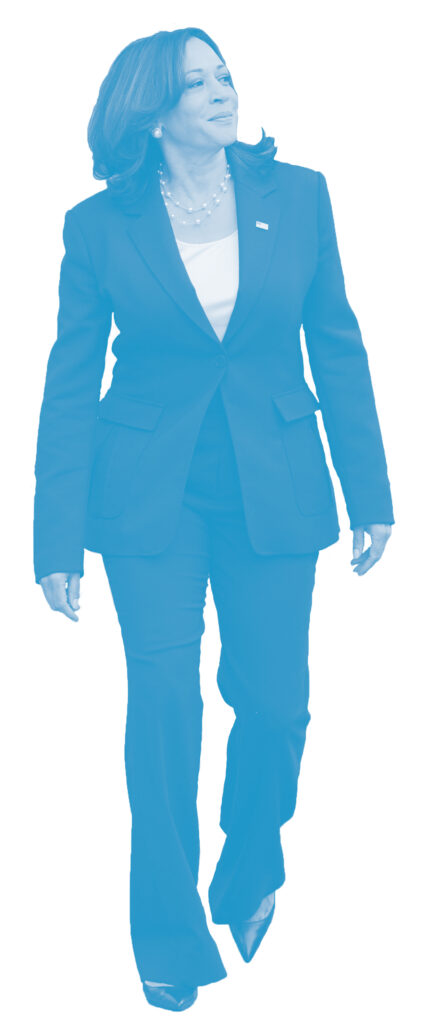
Data from the Pew Research Center on media polarization during the 2020 election shows “deep partisan divisions exist in the news sources Americans trust, distrust and rely on.”
According to the survey of 12,043 U.S. adults conducted Oct. 29 through Nov. 11, 2019, “Republicans and Republican-leaning independents view many heavily relied on sources across a range of platforms as untrustworthy. At the same time, Democrats and independents who lean Democratic see most of those sources as credible and rely on them to a far greater degree.”
In other words: “Almost half of the sources included in this report (13) are trusted by at least 33% of Democrats, but only two are trusted by at least 33% of Republicans,” the report says.
One main finding of the Pew Research Center study shows the trust/distrust of a specific media outlet are almost perfectly inverse to each other along party lines. The highest trusted sources by Democrats are the highest distrusted sources for Republicans and vice versa.
Amy Mitchell, director of journalism at Pew Research Center, elaborated more on the interpretation of the data in a Q&A discussing how Pew evaluated trust in the media. Mitchell explained how the study asked participants about both their trust and distrust in each of the 30 media outlets to show the “ratio” of trust/distrust.
For example, in this study Fox News has one of the largest percentages of U.S. adults who trust it for political news — 43%. “But it is also among the sources with the largest portion who distrust it — 40% of Americans express this view,” Mitchell said.
The study shows about two-thirds of Republicans trust Fox News and approximately two-thirds of Democrats trust CNN. But the report also says “while no other source comes close to rivaling Fox News’ appeal to Republicans, a number of sources other than CNN are also highly trusted and frequently used by Democrats.”
“What epitomizes this era of polarized news,” the report says, is “none of the 30 sources is trusted by more than 50% of all U.S. adults.”
The purpose of this study was not to rank various news outlets in terms of distrust or trust, Mitchell said. “Instead, we wanted to offer insight into the news sources partisans rely on for political news, and the degree to which there is common ground or division.” This is especially important for election years, she said.
“Overall, these findings reveal sharp divides in the use and trust of political news sources. They don’t reveal completely separate media bubbles. There are some news sources that both Democrats and Republicans turn to, but even those areas of overlap can be hard to fully gauge since using a news source doesn’t always mean people trust it,” Mitchell said.
Sharing truth on social media
One way to welcome context and seek truth is demonstrated by Danica Baird, a BYU communications alum who now practices corporate law in Salt Lake City. She shares news articles on her Facebook account with her thoughts and welcomes respectful comments from others.
Some issues she’s discussed on her Facebook page include House Republicans ousting Rep. Liz Cheney, R-Wyoming from her House leadership position in May and track star Sha’Carri Richardson failing a drug test ahead of the Olympics.
She sets an expectation that people with different views are going to be respected and treated civilly in the comment section. “By setting ground rules and boundaries, people respect them,” she said.

Baird also provides multiple sources of information from different news outlets and context surrounding different issues. She said she avoids sharing unsourced information that doesn’t have nuance and the facts.
According to the Pew Research Center, about a third of U.S. adults say they regularly get their news from Facebook. Users sometimes share political and controversial memes along with “share if you agree posts.” Baird said she avoids these because they are unsourced and meant to “up the temperature in the room” rather than educating and informing.
“I find that people who share these kind of memes or things like that often don’t always agree with everything that’s being said or think about the context in which it’s being shared,” Baird said. “They just post, and it always heightens the temperature and gets really ugly really fast, and it doesn’t uplift or educate or do anything that I would like to see happen.”
Instead of sharing this unhelpful content, people can instead share information that contributes to the public good. This can be achieved by asking themselves honest questions about the content they produce, why they’re producing it and what their stated goal is, Baird said.
If the goal is to stir up controversy or ‘score points’ for one’s side or against the other side, that means we’re on dangerous footing, she said. But sharing information to engage with others and inform means we’re on good footing.
“We all need to be careful with what we share and take a minute before we post to just stop and think about it,” Baird said, adding that people should verify information and find another source if it elicits a strong reaction.
The public good can also be achieved by acknowledging there are good and bad people on both sides of any issue. “This circumstance, if duly attended to, would furnish a lesson of moderation to those who are ever so thoroughly persuaded of their being right in any controversy,” Hamilton wrote in Federalist No. 1, adding that people are not always sure that those advocating for truth are influenced by purer principles than their antagonists. There can be bad motives to good ends.
“A lot of times in our society, if someone disagrees with us, society says ‘oh that means they’re wrong, or they’re evil, or they’re a bad person, or they’re brainwashed or they’re ignorant,’” Baird explained.
She said this can be really harmful and detrimental and she tries to remember and focus on the fact that people have different approaches and experiences.
Seeking “secular doctrine”
President Russell M. Nelson, President of the Church, said “good inspiration is based upon good information” during the Sunday morning session of April 2018 General Conference.
Members of the Church are taught to seek truth from credible sources and follow established doctrine — scriptures and teachings from prophets and apostles that are eternal, and differ from topics like temporary policies.
The Church put out a policy statement in December 2020 titled, “Seeking Information from Reliable Sources.”
“In today’s world, information is easy to access and share. This can be a great blessing for those seeking to be educated and informed,” it reads. “However, many sources of information are unreliable and do not edify. Some sources seek to promote anger, contention, fear or baseless conspiracy theories. Therefore, it is important that Church members be wise as they seek truth.”
The statement urges members to seek out and share only credible, reliable and factual sources of information rather than those that are speculative or founded on rumor. “The guidance of the Holy Ghost, along with careful study, can help members discern between truth and error.”
President Dallin H. Oaks, first counselor in the First Presidency, discussed seeking truth in another October 2018 General Conference talk titled, “Truth and the Plan.”
“We live in a time of greatly expanded and disseminated information, but not all of this information is true. We need to be cautious as we seek truth and choose sources for that search.”
President Dallin H. Oaks
He said members should be cautious about relying on information or advice offered by entertainment stars, prominent athletes or anonymous internet sources. “Expertise in one field should not be taken as expertise on truth in other subjects.”
Members should also be cautious of the motivation behind the person providing information, President Oaks said. If a source is anonymous or unknown, the information may also be suspect.
“Our personal decisions should be based on information from sources that are qualified on the subject and free from selfish motivations,” he said.
This advice is for seeking both religious and secular truth, or “secular doctrine.” Religious people have sets of information that are verified by whatever authority they follow — their doctrine. But in seeking truth on secular matters, the idea is the same — look for information that is credible and backed by someone who has expertise on it.
People can do this by taking a moment to think before sharing. Baird referenced a helpful acronym shared by Mormon Women for Ethical Government: SIFT. It stands for “Stop, Investigate the source, Find better coverage and Trace claims, quotes and media to the original context.”
Ask questions about the information you consume and see if it can be verified in other places. If something is fully true, further investigation won’t threaten it. As J. Reuben Clark wrote, “If we have the truth, it cannot be harmed by investigation. If we have not the truth, it ought to be harmed.”
Editor’s note: Photo illustrations by Kate Slobodian using photos from the Associated Press and iStock.com.

